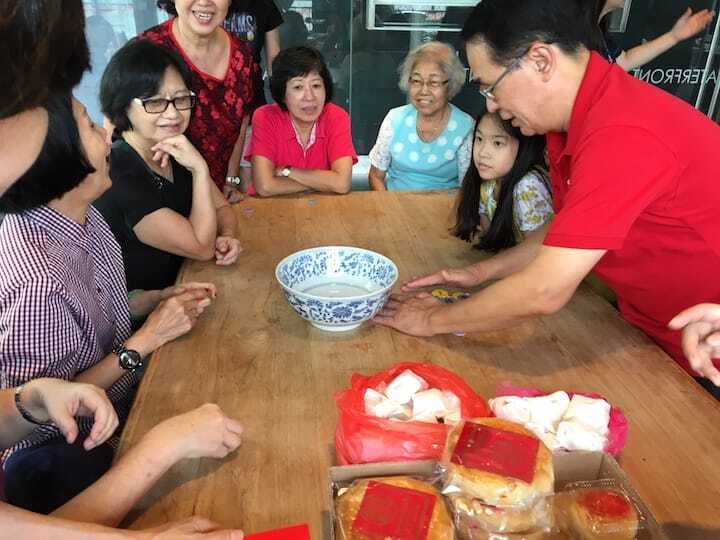
Toss For Tradition: Mid-Autumn Festival Dice Game
Carrying lanterns and munching on mooncakes have eclipsed the customary Mid-Autumn festivities in recent decades. However, there is a 400-year-old traditional game that you can play which rewards the winner with a giant mooncake.
The Mid-Autumn Festival Dice Game is a traditional Chinese game that dates back to the Qing dynasty in the 1600s. The game is also known as “zhuang yuan bo bing”, which is an amalgamation of the words “scholar”, “gambling” and “cake” in Mandarin. The historical game hails from Xiamen, where many members of the Hokkien dialect group descended from.
The Hokkiens believe that mooncakes are a symbol of good luck for those who are studying for their exams. Known as “scholar cakes”, these disc-like pastries were distributed to those who sat for the imperial examinations, which determined junior and senior court administrative positions in ancient China. Size mattered, so the largest mooncake was reserved for the top scholar.
Though the game’s popularity has dimmed, it is still played among the older generation in Xiamen, Taiwan, Hong Kong and Macau. The game also has a following among the Chinese community in the Philippines.
In Singapore, the game is known mainly by those in their 50s and 60s, and is played at family gatherings or Mid-Autumn Festival events run by clan associations. The Mid-Autumn Festival Dice Game can be found in old-school confectioneries such as Tan Hock Seng in Telok Ayer Street and Gin Thye in Sembawang Road.
How Does The Game Work?: The game comes in a set of 63 mooncakes of varying sizes, from bite-sized ones to the largest one that measures up to 16cm in diameter. It also involves six dice and a bowl for the players to toss them in. The results are invalid if any of the dice falls outside the bowl. Depending on the combination of numbers displayed in the six dice, the player will be awarded a mooncake.
The size of the mooncake depends on the numbers shown on the dice. The mooncakes are named after the six ranks in the imperial exam.
For example, if one of the six dice shows a four pips, one is bestowed a “xiu cai” title, which means the level of the person who passed the exam at country level and is given the smallest mooncake. On the other end, you are declared the “zhuang yuan” or scholar if four of your six dice show four pips. Another winning scenario is that five of the dice show the same number. The winner of the game is bestowed with the largest mooncake in the set of 63.
In contrast, 32 mooncakes are reserved for the lowest “xiu cai” rank, while 16 are made for the next ascending rank, “ju ren” (a successful candidate at the provincial level). The game, which has no limit to the number of players, continues until there are no mooncakes left.











